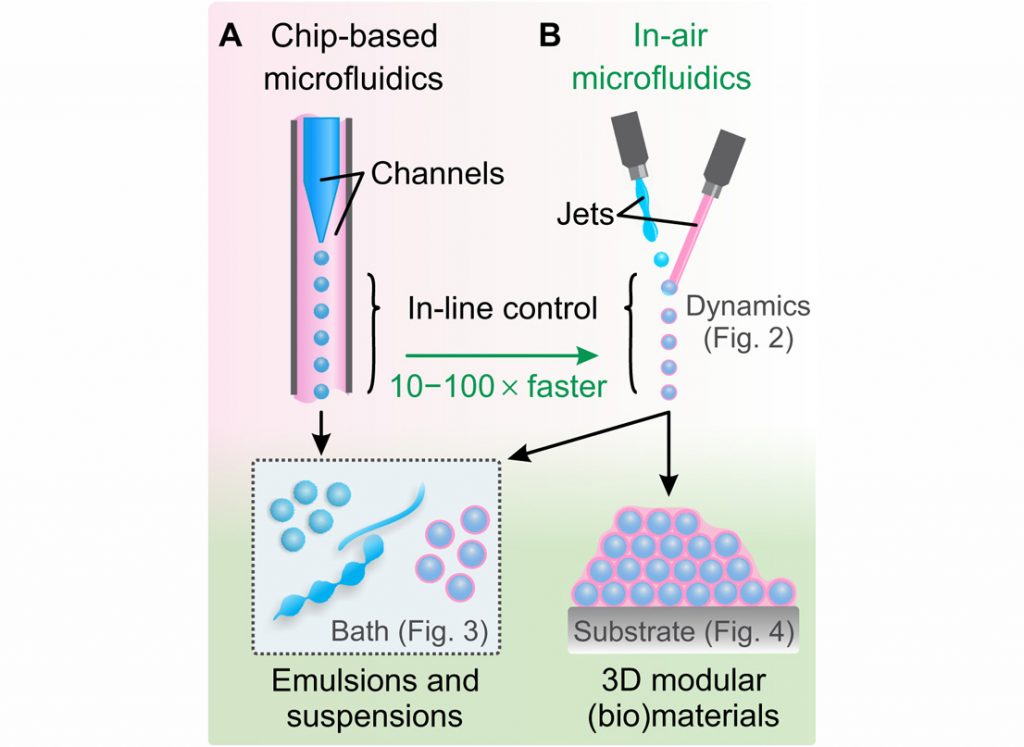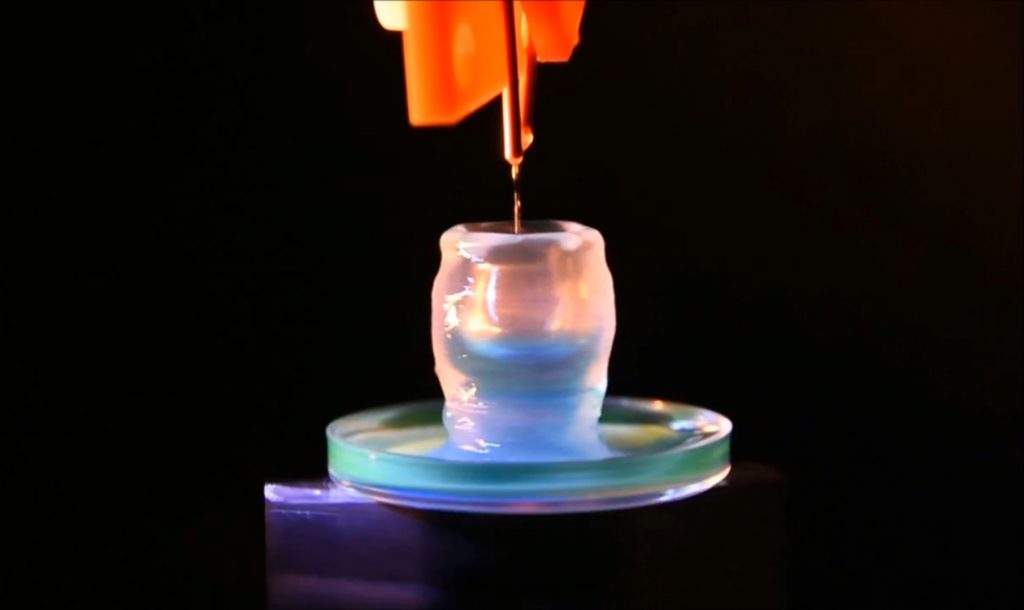3D printing is instrumental in next generation pharmaceuticals and regenerative medicine. The flexibility of the technique allows it to be used in a number of ways from providing the perfect microenvironment for living cells, to microfluidic chips ideal for testing and creating new chemical compounds.
However, a team at the University of Twente (UT), the Netherlands, noticed some shortcomings in conventional medical 3D printing techniques. In a method termed “in-air microfluidics” the UT team have developed a new, and entirely unique 3D bioprinting system that works by colliding particles in the air.
Pottery plus 3D printing
As seen the video above, in the UT setup a petri-dish spins on a kind of “potter’s wheel.” The dish acts as a substrate for materials, and sits below two pin-sized nozzles that make the machine’s print head.
Each of the pins is loaded with a different material, one that solidifies on contact with air, and the second a substance to be encapsulated. For demonstration purposed, the encapsulated substance is a CaCl salt, but the vision is that this could be replaced with, for example, a cell-laden ink.

Jetted at high speed from each of the nozzles, molecules of each material combine in the air as it acts as a channel. Particles stick to the dish on contact where they form layers to make a gelatinous free-standing structures.
The centrifugal force pushes the particles out to make a hollow tube, making a valuable “building block” for further medical research, i.e. cultivating cells into tissue.
Made in a matter of minutes
A seemingly haphazard approach, the combination of jet streams and the rapidly rotating dish creates a liquid-filled foam microstructure within the gel. The pores in this foam are microscopic, producing a scale closer to the body’s natural cell structure. By adding a mold to the spinning wheel, the researchers are also capable of making more complex 3D structures, e.g. bone.
The combined particles also offer a new potential method of making emulsions – mixtures commonly used to make cosmetic and pharmaceutical products.
If made using a solid microfluidic approach the flow rate of these products would much too slow for industrial applications, “filling a volume of a cubic centimeter would take about 1000 minutes or 17 hours” the UT release explains. “The technique that is presented now, does this in a couple of minutes.”

“In-air microfluidics enables rapid fabrication of emulsions, suspensions, and 3D modular (bio)materials” is published online in Science Advances journal. It is co-authored by Claas Willem Visser, Tom Kamperman, Lisanne Karbaat, Detlef Lohse and Marcel Karperien.
Is this award-winning research? Nominate the University of Twente research group now in the 2018 3D Printing Industry Awards.
For more industry-leading research subscribe to the most widely read newsletter in the industry here, like 3D Printing Industry on Facebook and follow us on Twitter.
Featured image shows in-air microfluidics 3D printing. Image via University of Twente



